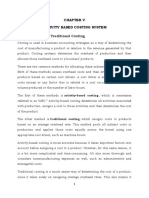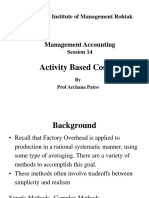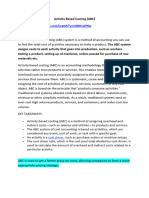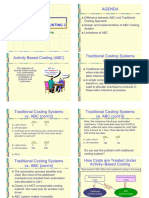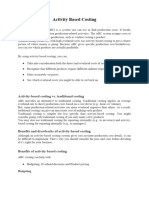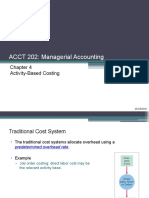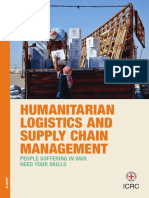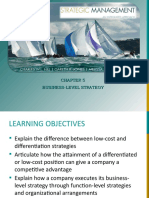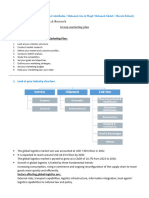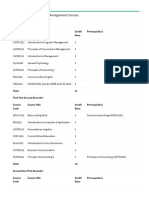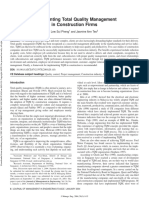0% found this document useful (0 votes)
35 views65 pagesActivity-Based Costing Students
The document discusses Activity-Based Costing (ABC) as a method to improve cost accuracy compared to traditional costing systems. ABC identifies individual activities as cost objects and assigns costs based on the activities required for each product or service, providing more precise cost information for decision-making. It highlights the deficiencies of traditional costing methods and outlines the steps for implementing ABC, including defining activities, tracing costs, and calculating activity rates.
Uploaded by
Rochelle JordanCopyright
© © All Rights Reserved
We take content rights seriously. If you suspect this is your content, claim it here.
Available Formats
Download as PDF, TXT or read online on Scribd
0% found this document useful (0 votes)
35 views65 pagesActivity-Based Costing Students
The document discusses Activity-Based Costing (ABC) as a method to improve cost accuracy compared to traditional costing systems. ABC identifies individual activities as cost objects and assigns costs based on the activities required for each product or service, providing more precise cost information for decision-making. It highlights the deficiencies of traditional costing methods and outlines the steps for implementing ABC, including defining activities, tracing costs, and calculating activity rates.
Uploaded by
Rochelle JordanCopyright
© © All Rights Reserved
We take content rights seriously. If you suspect this is your content, claim it here.
Available Formats
Download as PDF, TXT or read online on Scribd
/ 65



